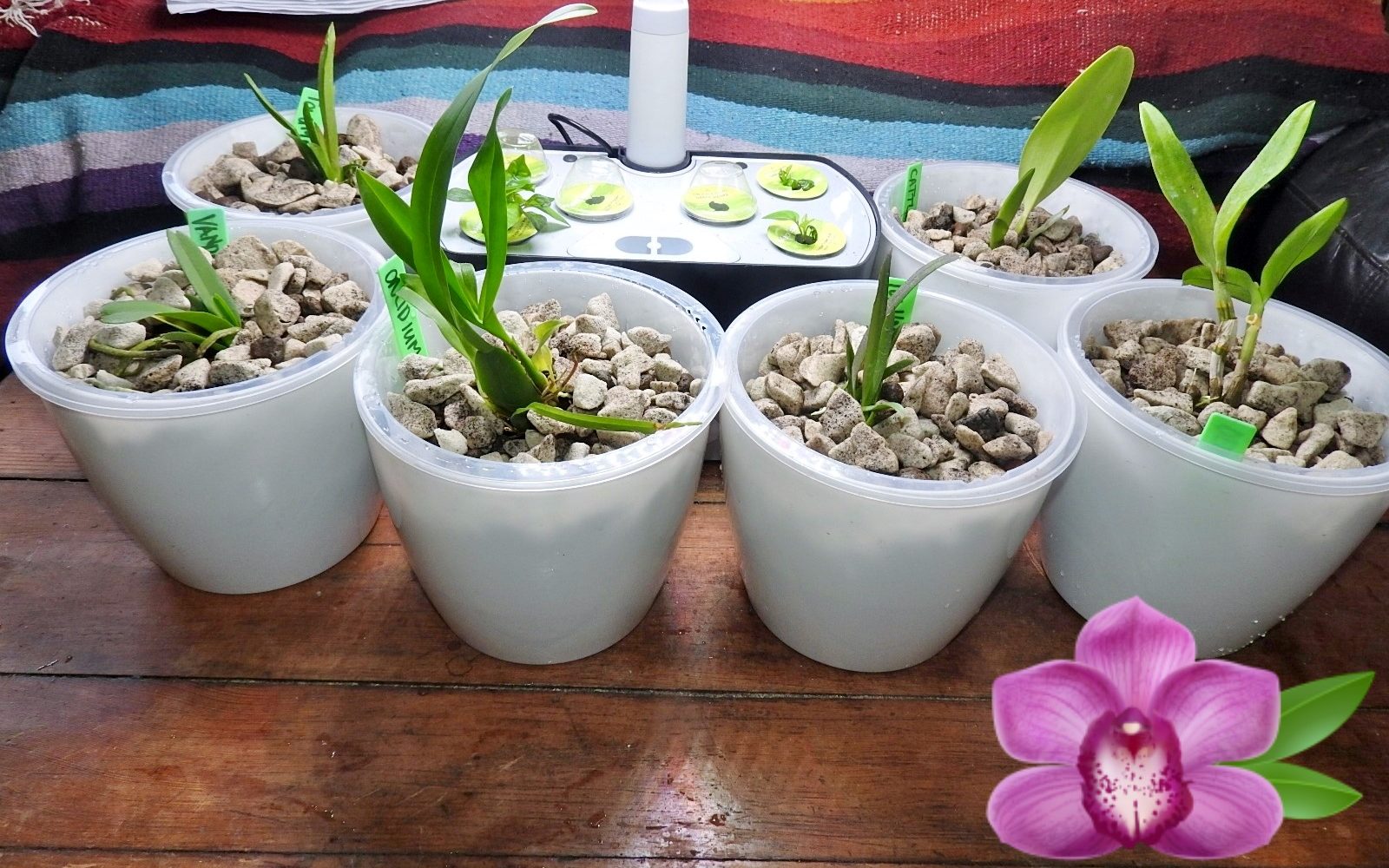 Self watering pots have become a fairly popular way to grow orchids.
Self watering pots have become a fairly popular way to grow orchids.
This is because they offer a number of advantages, such as the media staying moist and roots not drying out, which can help prevent overwatering and underwatering.
However, some people are unsure if self watering pots are good for orchids.
In this blog post, we will take a look at the pros and cons of using self watering pots to grow orchids and provide some tips on how to make them work well for your plants.
Self Watering Pots Pros And Cons
Self watering pots keep media moist and prevent roots from drying out. This can help prevent overwatering and underwatering.
Incorrect watering, either too much or not enough is one of the biggest problems orchid growers face.
Some people are unsure if self watering pots are good for orchids, so let’s explore the pros and cons
Pros:
Constant moisture can be beneficial for orchids that like to stay moist
Self watering pots can be helpful if you’re forgetful or have a busy schedule
One great advantage of self watering pots is the media stays moist and roots won’t dry out. They can help prevent overwatering and underwatering.
Generally, self watering pots work well for growing orchids but a lot depends on the growth medium used in them.
Cons:
If not monitored, self watering pots can lead to overwatering
Orchids that like to dry out between waterings may not do well in self watering pots.
Mediums such as bark may stay too wet for some orchids. Some orchids require some drying out and bark media may stay too wet.
I have used LECA in my self watering planters for my orchids and it worked really well.
I found the top was not overly wet and I actually would mist it from time to time because it seemed fairly dry.

They are attractive and a good size for orchids.
You can check them out on Amazon here.
The inner pot is clear so you can easily check the roots of your orchid. They come with wicking material.
One important thing you should know is that the growing media and the wick must be thoroughly wet for these pots to work correctly.
I recommend totally submerging them in a bucket at first. From then on the will wick water from the outer pot. Simply lift the inner pot out from time to time to refill the reservoir.
More information on using self watering planters here:
Orchid Plant Unboxing And Potting Up – Hydroponic Orchids
Monitor your plants closely, especially when you’re first starting out
Anyone who has ever tried to keep a plant alive knows that it can be a difficult and costly endeavor.
Between making sure they get enough water, light, and nutrients, it’s easy to forget about your plants until it’s too late.
However, self-watering pots can help take some of the guesswork out of plant care.
These pots have a built-in reservoir that slowly releases water to the roots as needed.
As long as you keep the reservoir filled, your plants will be able to stay hydrated without you having to water them every day.
In addition, self-watering pots can help prevent overwatering, which can cause root rot and other problems.
If you’re looking for an easy way to take better care of your plants, self-watering pots may be a good option for you.
Choose an orchid that will do well in moist conditions if you want to use a self watering pot
Orchids are a popular choice for indoor plants, due to their exotic appearance and relatively easy care requirements.
However, many species of orchids require special care when it comes to watering.
If you’re using a self-watering pot, it’s important to choose an orchid that will do well in moist conditions.
Otherwise, you run the risk of overwatering your plant and causing root rot.
Fortunately, there are several orchid species that will thrive in a self-watering pot, including Phalaenopsis, Cattleya, Oncidium and Dendrobium.
I found my Vanda orchid definitely likes its roots on the drier side so it might not be a good choice for a self watering planter.
With a little research, you can find the perfect Orchid for your home and enjoy years of beautiful blooms.
Do some research to see if a self watering pot is right for your orchid before making the switch!
Orchids are a beautiful and exotic addition to any home, but they can be notoriously difficult to care for.
One of the most important things to remember when caring for an orchid is that it needs to be watered regularly, but not allowed to sit in water.
This can be a tricky balance to strike, but self watering pots can help.
Self watering pots have a reservoir of water that slowly releases moisture to the plant as needed.
This can help to ensure that your orchid always has the right amount of water, without the risk of overwatering.
Before making the switch to a self watering pot, however, it’s important to do your research to make sure that it’s the right choice for your particular Orchid.
With a little bit of care and attention, you can keep your Orchid healthy and beautiful for years to come!
FAQ
Are self-watering pots good for orchids?
Self-watering pots can be a good option for orchids as long as you pay attention to the specific needs of your orchid.
Orchids are a diverse group of plants and their watering needs can vary depending on the type of orchid and the conditions in which it is growing.
In general, orchids prefer to have their potting mix dry out slightly between watering, so you’ll want to make sure that the water reservoir in the self-watering pot you are using is not overfilled allowing the potting mix to dry out to some extent.
Using LECA or grow stones works well because they don’t stay overly wet while a peat or coco coir based growing medium may hold too much moisture for some types of orchids.
Do self-watering pots prevent overwatering?
Self-watering pots can help to prevent overwatering by allowing plants to take up water as needed from a reservoir by capillary action.
This can be especially helpful for people who may forget to water their plants regularly or who may not have a good sense of how often their plants need to be watered.
With self-watering containers, you can fill the reservoir and then let the plant take up as much water as it needs, rather than watering the plant on a set schedule.
However, it’s important to note that self-watering pots are not a foolproof solution to overwatering.
You will still need to pay attention to your plants and check the plant roots are not taking up too much water.
Read more: Growing Orchids In Hydroponics: Tips and Tricks
This post contains affiliate links.

